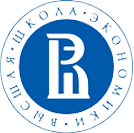The publication edited by Andrew Dornbierer and based on the analysis of legislation of 103 jurisdictions explores different domestic approaches to the definition of “illicit enrichment” and existing mechanisms for detecting and suppressing relevant offences. The author also developed a set-by-step guide for investigators on how to collect and analyse financial information and evidence to prove illicit enrichment.
Mr. Dornbierer stresses that the employment of the mechanisms for holding individuals liable for illicit enrichment can be quite useful in the fight against different crimes, including corruption, as it allows the imposition of sanctions without proving that the individual was involved in the underlying illegal activities that generated relevant proceeds: it suffices that the individual owns relevant assets but cannot explain their legitimate origin. This is particularly relevant for the countries where the practice of paying bribes by transmitting small sums of money for a certain period of time is widespread; as a consequence, it is almost impossible to prove every single act of payment, which means that the corrupt officials can escape liability and keep their ill-gotten gains.
In the most general sense, “illicit enrichment” means the receipt by an individual of certain “wealth” that is not justified through reference to lawful income; however, at the domestic level the meaning of “wealth” and “income” as well as the scope of individuals subject to the relevant norms can differ considerably*. For instance, “wealth” can include not only conventional material assets such as real estate and expensive property (Bangladesh, Togo, Jamaica) but also a wider range of goods that “have allowed the individual to raise his/her standard of living” such as clearance of debts or provision of services (Hong Kong, Bhutan, Ethiopia, Fiji, Tanzania and other countries); furthermore, these legal provisions can be applicable not only to public officials but also to any natural persons (as is the case in Lithuania), the persons who have contributed to obtaining illicit property (Mauritania, Argentina, El Salvador, Tunisia) and even legal persons (Lithuania, Madagascar, Senegal).
The first legal initiatives aimed at introducing liability for illicit enrichment date back to the 1950s (Hong Kong, the Philippines); in subsequent years Pakistan, India, Argentina, Egypt, Senegal, Cuba, Turkey and Niger followed their lead, whereas it was at the turn of the century that the provisions on illicit enrichment were included in international agreements: the Inter-American Convention against Corruption (1996), the African Union Convention on Preventing and Combating Corruption and the UN Convention against Corruption (2003). Since then ever more countries have included relevant provisions in their legislation.
Although article 20 of the UNCAC recommends that States parties criminalise illicit enrichment, not many countries even among those that have ratified the Convention with no reservations and notifications (including the Russian Federation) have agreed to incorporate this solution in their legislation. This is largely due to the fact that the criminalisation of illicit enrichment, which does not imply the need to prove that illegal property is obtained through unlawful conduct, is not in line with the traditional legal thinking based on the “crime-punishment” paradigm. The opponents of the criminalisation of illicit enrichment stress that the introduction of this corpus delicti violates fundamental human and civil rights, including the right to silence and the privilege against self-incrimination, shifts unlawfully the burden of proof from law enforcement authorities to the individual suspected of receiving unlawful assets and infringe on the presumption of innocence principle.
This, however, does not mean that all countries that have refused to criminalise illicit enrichment do not have the mechanisms for holding individuals liable for this kind of misconduct. Whereas in the beginning, when some countries only started to introduce relevant norms, illicit enrichment was considered prevalently as a criminal offence, this century sees that countries are adopting an approach whereby an individual can be held liable for unexplained increase in wealth under civil proceedings.
The author pays equal attention to the two models (criminal and civil), but categorises laws as regulating illicit enrichment in its basic understanding only under two conditions: 1) relevant legislation implies the possibility to impose sanctions for the sheer fact of unexplained increase in assets; and 2) in order to hold an individual liable it is necessary to produce evidence of the underlying criminal activity that resulted in the acquisition of those assets.
This reservation is needed because some laws regulating other issues also use the notion of “illicit enrichment”/“unjustifiable increase in assets” but in a slightly different context:
1) This regards, in the first place, the legal provisions regulating the use of the mechanisms of non-conviction-based confiscation of property acquired with illicit assets (we have previously reviewed the report of the Council of Europe on this topic). Mr. Dornbierer highlights that the norms on illicit enrichment are less severe than the provisions on non-conviction-based confiscation, which is due to the following reasons. Firstly, they do not imply the need to ascertain the fact that certain assets are proceeds of crime or were involved in its commission; secondly, non-conviction-based confiscation is feasible with regard to the conventional material assets, whereas the legislation on illicit enrichment can be enforced in other cases when an individual “raises his/her standard of living” (for example, when he/she clears his/her debt).
2) Another close area is the extended confiscation legislation. Extended confiscation means asset recovery mechanisms that can be used after a conviction for a particular type of offence (such as money laundering) has been reached to potentially target assets controlled by the convicted person. Like with illicit enrichment measures, the possibility to hold the offender liable is triggered without the need to demonstrate the criminal activity from which the assets were derived; however, extended confiscation measures can only be triggered after it is proved that the person has committed a criminal offence, as the above-mentioned definition demonstrates.
3) The term “illicit enrichment” is used interchangeably with the term “unjust enrichment” in some jurisdictions. However, the author notes that “unjust enrichment” is also a label given to a private claim for restitution based on civil law, where one party seeks to restore for themselves the gains that another party has unduly made at their expense.
In addition to these related cases, Mr. Dornbierer also defines such a category as qualified illicit enrichment laws, meaning the laws that do not require proving underlying criminality (the second of the aforementioned conditions) but require providing evidence of a “reasonable suspicion” or a “reasonable belief” that some sort of underlying criminality has taken place. For instance, Kenya’s Anti-Corruption and Economic Crimes Act is a qualified law: it empowers a court to make a civil forfeiture order against a person if they are deemed to hold assets that are disproportionate to the person’s known sources of income and for which they do not have an explanation. In addition to this, however, for these assets to be considered “unexplained”, the person must have acquired them at the time that they were “reasonably suspected of corruption or economic crime”.
Based on this approach, the author explores 98 countries that have illicit enrichment provisions; most of them are situated in the Asia Pacific and Africa (36 and 35 countries respectively), other 25 are located in the Americas and only two in Europe [the Russian Federation that uses civil proceedings for holding individuals liable for illicit enrichment detected in the course of asset disclosure verifications is not included in Mr. Dornbierer’s study, which is most probably due to the language barrier and the lack of relevant publications in other languages but Russian].
According to the study, most provisions of this kind are included in the criminal legislation; the practice of incorporating relevant provisions in civil laws is a bit less widespread, whereas some countries have other forms of liability for illicit enrichment: for instance, Angola and Brazil classify illicit enrichment as a public or administrative “improbity”. Another illustrative example is Fiji’s combined approach, where illicit enrichment can entail both criminal and civil liability. This approach is curious because it combines the advantages of the two models: there are stricter consequences for a person subjected to criminal illicit enrichment law, including an incarceration period, however the standard of proof that must be reached is also much higher, which means that its application has a limited scope. In contrast, civil illicit enrichment laws imply less strict sanctions, generally requiring only the repayment of the proven value of illicit enrichment, but can be applied to a much wider scope of persons with a lower threshold of proof required.
The author also cites the examples of some countries whose legislation does not correspond to the criteria used in the publication to determine them as illicit enrichment laws, but nevertheless should be mentioned due to the similarity of the provisions of this legislation to the illicit enrichment liability mechanism. In particular, the study explores the UK’s current legal provisions on “unexplained wealth”, the Irish Proceeds of Crime Act, Switzerland’s Law on the Freezing and the Restitution of Illicit Assets Held by Foreign Politically Exposed Persons, and other legal provisions on anti-corruption asset disclosure related to illicit enrichment (North Macedonia, Gabon) and tax legislation (the United States).
Besides general approaches towards introducing liability for illicit enrichment Mr. Dornbierer also examines in detail different “reference points” on which the illicit enrichment regulatory models are based. For example, in addition to the different definitions of “wealth” and the scope of offenders mentioned above, the author analyses alternative approaches to shifting the burden of proof to the individual suspected of illicit enrichment, to the law enforcement authorities and reversing it on both of them, possible language of the provisions guaranteeing the protection of the individuals suspected of illicit enrichment from abuses by law enforcement bodies and violations of their civil rights, types of sanctions imposed etc.
The final part of the study is centered on the key arguments against the introduction of liability for illicit enrichment based on the existing case law. These include:
- unjust reversal of the burden of proof and violation of the presumption of innocence principle;
- incompatibility of illicit enrichment laws with the right to silence and the privilege against self-incrimination;
- possibility to apply illicit enrichment laws retroactively.
*The author stresses that countries can even name differently this kind of misconduct: the traditional term “illicit enrichment” can be literally translated as “illegal enrichment” in some languages (as in Russian), “unjust enrichment”, “illicit gain”, “unexplained wealth” or “unexplained property”. The Russian Federation defines “illicit enrichment” as “the property whose acquisition with lawful income has not been proved”.

